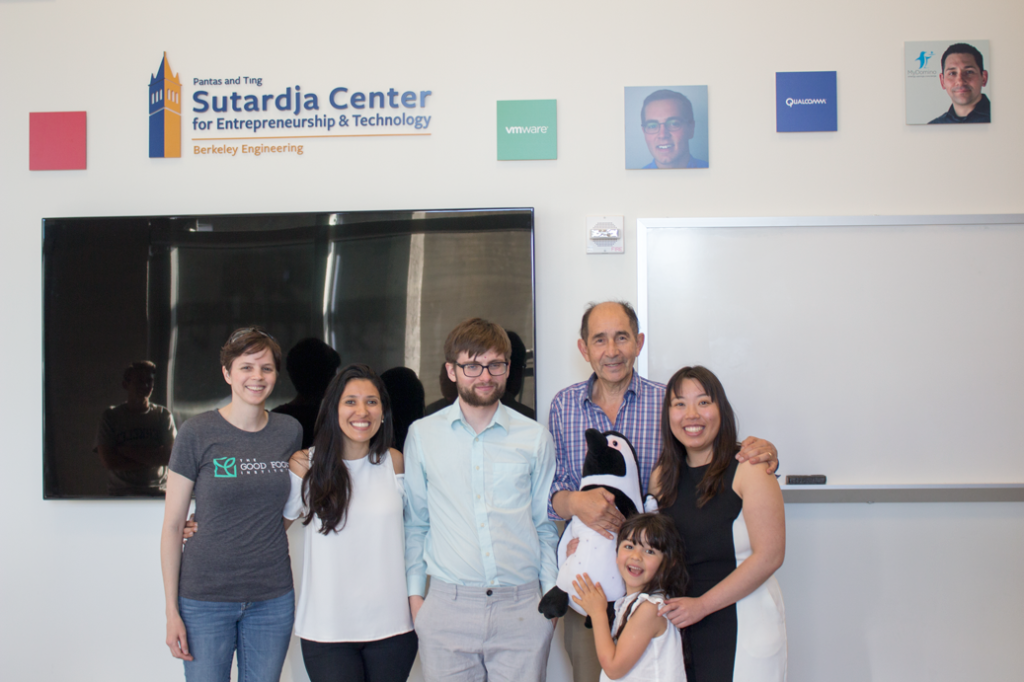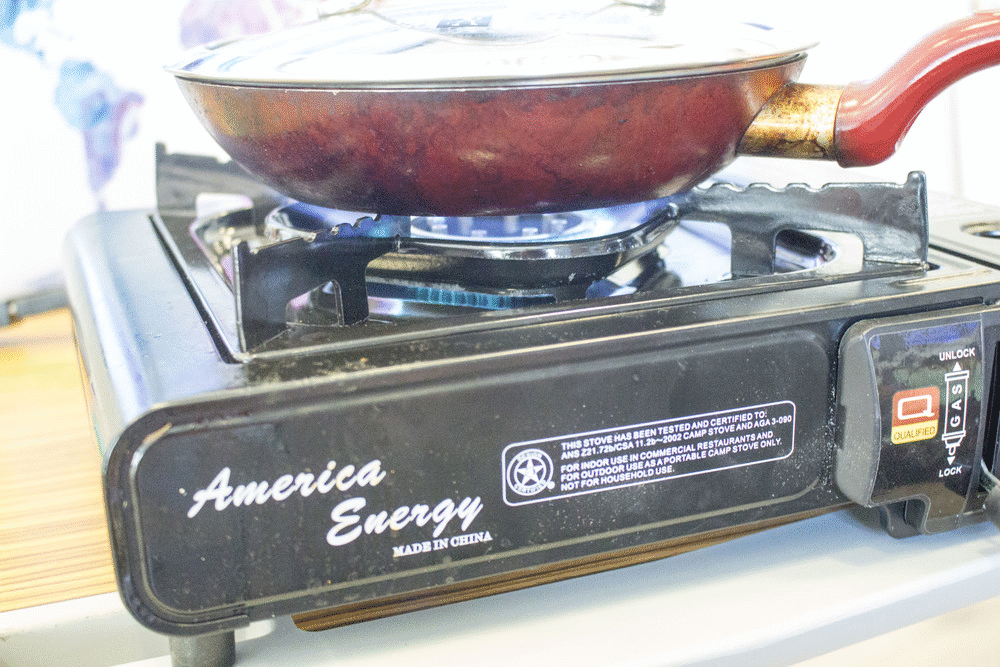Students serve up next generation plant-based seafood
On May 3rd, Team Dory (Kimberlie Le and Joshua Nixon) cooked up a flaky, fatty, fishy plant-based salmon to win the plant-based seafood collider finals.

Joshua Nixon and Kimberlie Le from Team Dory serving up plant-based fish to Christie Legally from the Good Food Institute
The challenge for this collider was to develop a roadmap for a company selling plant-based seafood that tastes, smells, and cooks like fish. Prizes and advising for the collider were sponsored by SeaCo with further mentorship and support provided by the Good Food Institute. The final pitches were judged by Renée Loux, co-founder of SeaCo, Bryan Chang from the Collaborative Fund, Christie Legally from the Good Food Institute, and Ben Roche from Hampton Creek.
Team Dory took home the prize by finding plant-based solutions to replicate the characteristics that people love about seafood: healthy fats, flaky texture, and a fishy taste that melts in your mouth. Additionally, the group worked to find solutions that would be non-GMO and have low environmental impact.
“When we first heard of the plant-based seafood challenge, we were really excited because it fit well into our academic domains, myself with bioengineering and Kim with environmental studies,” said Joshua Nixon from Team Dory, “We really saw this as a biological challenge, not so much as one of a mechanical or informational nature. I think this led us in a very different direction than the other teams, largely due I think to our academic backgrounds.”

From left to right: Christie Legally from the Good Food Institute, SCET Program Manager Danielle Vivo, Joshua Nixon from Team Dory, Professor Ricardo San Martin and his daughter Agatha, and Kimberlie Le from Team Dory
Through their research, Team Dory decided that fungi would be the best choice to be the base for their plant-based seafood. Fungi have properties that are much more similar to meat than vegetables. Its texture is more like meat when cooked; it has a filamentous structure which replicates the muscle fibers of meat; and it matches the nutritional profile of meat better than vegetables. It is also very sustainable in terms of land and water usage.
Fungi also naturally contain a meaty (umami) flavor that Team Dory sought to enhance by using microalgae which also contain Omega-3 Fatty acids to make the plant-based seafood as healthy as the real thing.
“The things we have learned from SCET are very practical for us post-graduation; we feel confident in knowing how to go about entrepreneurship,” said Joshua, “The lessons in teamwork, communication, and grit, as well as start-up know-how, are hard to describe because they aren’t taught from a book, you learn them viscerally through experience.”
Team Dory wasn’t the only one with innovative solutions for creating plant-based seafood.
Taking 2nd place was Team 5 Star (Aaron Hall, Isabella Huther, Aaron Jauregui, Vin Lay, Etisha Lewis, and Max Yen) which worked on replicating salmon and tuna. Team 5 Star’s key insight was that they could replicate many of the flavors created by heme (a key element to creating a “meaty” flavor), by adding metals such as copper and iron. Adding iron to a plant-based broth improved its flavor match (with shrimp) by nearly 25% (which they verified by using mass spectrometry).

From left to right: Etisha Lewis from Team 5 Star, Christie Legally, Danielle Vivo, Aaron Hall from Team 5 Star, Max Yen from Team 5 Star, Professor Ricardo San Martin, Isabella Huther from Team 5 Star, and Aaron Jauregui from Team 5 Star
Team 3 (Maddie Huber, Judy Shan, Tejal Gala) focused on emulating sardines and tilapia and took 3rd place. One of their creative innovations was a “collagen-protein matrix” to replicate the texture of fish. The matrix is composed of agar (a plant-based alternative to collagen), textured vegetable protein, and algae layered in a brick-like pattern to help create the signature flaky texture and melt-in-your mouth feeling of fish.

From left to right: Christie Legally, Tejal Gala from Team 3, Danielle Vivo, Ricardo San Martin, Maddie Huber from Team 3, and Judy Shan from Team 3
All the teams in the collider brought useful insights to the problem of creating a roadmap for a plant-based seafood company selling fish that closely resembles the real thing.
“We were thrilled to sponsor the collider project’s synergy of thought leaders at SCET, the Good Food Institute and a dynamic group of teams compelled to tackle a unique and complex challenge,” said SeaCo co-founder Renée Loux, “At SeaCo, we’re committed to utilizing innovation and commerce to help solve our oceans’ issues and the range of inventive presentations and critical and creative thinking illustrates great promise for the next generation of the plant-based industry.”
With the world’s population growing, demand for seafood rising, and fish populations dwindling, this collider has helped move the world closer to providing seafood that will be more sustainable, ethical — and very importantly, just as tasty — as the real-thing.
